Cooking Healthy

What are some must-have kitchen gadgets for healthy eating ?
In pursuit of healthy eating, having the right kitchen gadgets can significantly improve the preparation and enjoyment of nutritious meals. This article lists essential tools such as a high-quality chef's knife for efficient chopping, a food processor for versatile cooking tasks, a steamer basket for nutrient-rich cooking, and other devices like slow cookers, spiralizers, and immersion blenders that facilitate healthy meal preparation. Each device is discussed in terms of its benefits, uses, and why it is considered essential for healthy cooking. By incorporating these tools into your kitchen setup, you can make preparing healthy meals easier and more enjoyable, setting the foundation for a lifetime of healthy eating habits.
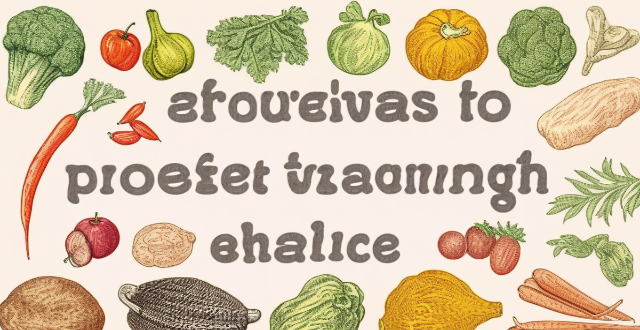
How can I streamline my cooking process to save time in the kitchen ?
The text provides tips and tricks for streamlining the cooking process, including planning ahead, using slow cookers or pressure cookers, prepping ingredients in advance, cooking once and eating multiple times, and cleaning as you go. These strategies aim to save time, reduce stress, promote healthy eating, and create a more enjoyable cooking experience by emphasizing preparation and organization.

What are the best techniques for cooking seafood ?
The article provides a summary of the best techniques for cooking seafood, which include poaching, grilling, steaming, and baking. Poaching is a gentle method of cooking seafood in a flavorful liquid such as water, broth or wine. Grilling is ideal for firm-fleshed fish like salmon or swordfish and adds flavor and texture to seafood. Steaming is a healthy way to cook seafood without adding extra fat and works well for fish fillets or shellfish like clams or mussels. Baking is a dry heat method that works well for thicker cuts of fish like cod or haddock. The article emphasizes the importance of paying attention to timing and temperature to avoid overcooking seafood.

What are some ways to organize my kitchen to make cooking more efficient ?
Organizing your kitchen can greatly enhance the cooking experience by making it more efficient and enjoyable. Here are some strategies to consider: 1. Zone Cooking Areas 2. Declutter Regularly 3. Smart Storage Solutions 4. Group Like Items Together 5. Maximize Fridge and Freezer Space 6. Keep a Clean Sink 7. Lighting and Safety
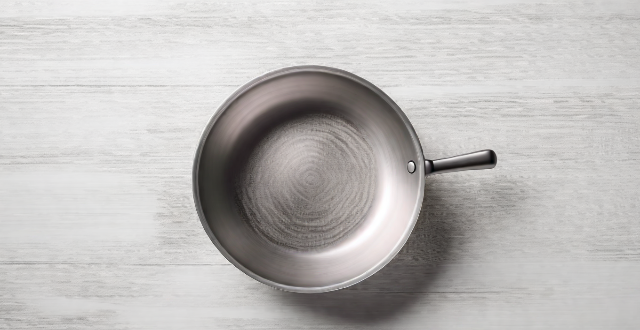
Can you explain the different types of cooking pans and their uses ?
The text provides a detailed overview of different types of cooking pans, highlighting their specific uses and features. It covers non-stick pans, cast iron pans, stainless steel pans, copper pans, aluminum pans, grill pans, skillets, saucepans, and griddle pans. Each type of pan is described in terms of its ideal uses and unique characteristics, such as heat conductivity, maintenance requirements, and compatibility with various cooking methods and materials. The summary emphasizes the importance of using the right pan for a given task to achieve optimal cooking results.

What are some creative ways to use tofu in vegetarian cooking ?
Tofu is a versatile and nutritious ingredient that can be used in a variety of vegetarian dishes. Here are some creative ways to use tofu in your cooking: marinated and grilled tofu skewers, creamy tofu pasta sauce, tofu stir-fry, tofu bao buns, tofu scramble, and tofu dumplings. By incorporating these ideas into your vegetarian cooking, you can enjoy the many health benefits of tofu while exploring new flavors and textures in your meals.

What are the basic techniques used in Chinese cooking ?
Chinese cuisine is known for its diverse flavors and cooking techniques. Here are some of the basic techniques used in Chinese cooking: 1. Stir-frying involves quickly frying small pieces of food in a wok or frying pan over high heat. The key to successful stir-frying is to use hot oil, fresh ingredients, and constant motion to prevent burning. 2. Steaming involves placing food in a steamer basket over boiling water and allowing it to cook through steam. This method is often used for dumplings, buns, fish, and vegetables. 3. Braising is a slow-cooking method that involves simmering meat or vegetables in liquid until they become tender and flavorful. This technique is often used for stews, soups, and braises. 4. Deep-frying involves submerging food in hot oil until it becomes crispy and golden brown. This technique is often used for fried rice, spring rolls, and tempura dishes. 5. Roasting involves cooking food in an oven at high temperatures until it becomes caramelized and tender. This technique is often used for roasted meats, vegetables, and baked goods like mooncakes and egg tarts.
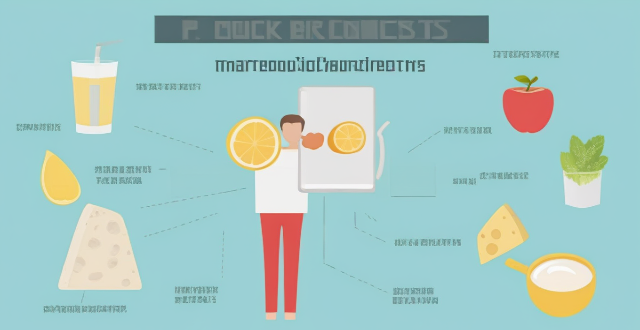
How can I make a quick and healthy breakfast in the morning ?
The text provides tips on how to make a quick and healthy breakfast, emphasizing the importance of planning ahead, keeping it simple, using convenience foods wisely, not forgetting protein, and drinking plenty of water. It also offers examples of quick and healthy breakfast options such as overnight oats, Greek yogurt with berries, whole grain toast with avocado, egg, and tomato, and smoothie bowls with frozen fruit, spinach, and almond milk. The text suggests incorporating protein into breakfast by adding eggs, Greek yogurt, cottage cheese, nuts, or seeds to the meal. It also recommends staying hydrated by drinking a glass of water before breakfast and incorporating water-rich fruits like melon or cucumber into the meal.

How can I use kitchen appliances to save time while cooking ?
Using kitchen appliances like food processors, slow cookUsing kitchen appliances like food processors, slow cookers, rice cookers, slow cookers, electric pressure cookers, rice cookers, and stand mixers can significantly save time in meal preparation. These appliances offer features such as chopping, grinding, making dough, cooking at different heat settings, and precise mixing, allowing for efficient and convenient cooking experiences.

How does proper cooking and baking contribute to food safety ?
Food safety is crucial for maintaining public health and preventing illnesses. Proper cooking and baking are vital components of food safety, as they can destroy harmful microorganisms that may contaminate raw ingredients. High temperatures during cooking and baking kill most bacteria, reduce viruses, and eliminate parasites. Additionally, proper cooking practices prevent cross-contamination by using separate utensils and cutting boards for different types of food. To ensure food safety during cooking and baking, it's essential to use a food thermometer to check the internal temperature of cooked foods, follow recipes and time guides, keep work surfaces and equipment clean, store raw and cooked foods separately, avoid overcrowding pans, and refrigerate leftovers promptly. By adopting these best practices, you can significantly minimize the risk of foodborne illnesses and enjoy safe, delicious meals.

What are the most common mistakes when cooking lobster at home ?
Cooking lobster at home can be delightful but common mistakes can affect taste and texture. Here are the most frequent errors: 1. **Not Preparing the Lobster Properly** - Underestimating the amount of salt needed for cooking water. - Ignoring the rinse before cooking to remove sand or grit. 2. **Overcooking the Lobster** - Cooking too long results in tough and chewy lobster. - Lack of temperature control during cooking. 3. **Choosing the Wrong Lobster** - Selecting poor quality or lethargic lobsters. - Neglecting size variation leading to uneven cooking times. 4. **Disregarding Safety Precautions** - Handling live lobsters incorrectly, risking injury. - Ignoring cross-contamination with other foods. 5. **Inadequate Flavoring** - Skipping seasoning, missing out on enhancing natural sweetness. - Overlooking garnishes that can improve the dining experience. 6. **Improper Storage and Handling** - Storing improperly if not cooked immediately. - Delaying cooking after purchase, risking the quality of the lobster. By avoiding these mistakes, you can ensure that your homemade lobster dishes are delicious and succulent.

In what ways can workplaces promote healthy lifestyle habits among their employees ?
This article explores various ways in which workplaces can encourage healthy lifestyle habits among their employees, including physical activity, healthy eating, mental well-being, and breaks/time off. By implementing strategies such as on-site fitness facilities, flexible working hours, healthy snack options, counseling services, and celebrating milestones, companies can improve productivity, reduce absenteeism, and enhance employee satisfaction. The article concludes that employers who invest in their employees' health and wellness are likely to see long-term benefits for both the individual and the organization as a whole.

How can online platforms be utilized to promote physical activity and healthy lifestyles ?
In the digital age, online platforms have become aIn the digital age, online platforms have become a disseminating information and online platforms have become a pivotal tool for disseminating information and fostering community engagement. These platforms can be effectively utilized to encourage physical activity and promote healthy lifestyles. Here's how: Educational Content Creation: Health and Fitness Blogs share informative articles about the benefits of regular exercise, nutritional guidance, and tips for maintaining a healthy lifestyle. Interactive Q&A Sections encourage readers to ask questions and engage in discussions about health-related topics. Video Tutorials and Workouts post home exercise routines that can be done at home without equipment. Live-Streamed Classes host live workout sessions where participants can join in real time and get motivated by others. Online Challenges and Competitions: Step Challenges use apps that track steps and create challenges for users to reach a certain step count within a given period. Community Leaderboards set up leaderboards to showcase top performers and encourage friendly competition. Healthy Eating Contests challenge participants to share photos of their healthy meals with a dedicated hashtag. Weekly Themes introduce weekly themes like "Meatless Monday" or "Water Wednesday" to focus on specific dietary habits. Social Media Engagement: Inspirational Posts share success stories about individuals who have achieved significant health milestones through physical activity and good nutrition. Daily Motivational Messages post daily messages to inspire followers to stay active and maintain a positive mindset. Interactive Features create fun quizzes related to health facts or polls about preferred types of workouts. Live Chats with Experts organize live chat sessions with fitness coaches or nutritionists for instant advice and tips. Virtual Support Groups: Online Forums and Communities establish forums where people can discuss their progress, challenges, and support each other. Accountability Partners match users with accountability partners to keep each other motivated and on track. Webinars and Workshops host webinars on topics such as stress management, sleep hygiene, and meal planning. Interactive Workshops offer workshops where participants can learn new skills like cooking healthy meals or practicing yoga. Gamification: Rewards and Recognition award badges or certificates to users who complete certain challenges or reach their goals. Points Systems implement a points system where users earn points for exercising or making healthy choices, which can be redeemed for rewards. Fitness App Integration connect popular fitness apps to allow users to sync their data and track their progress more easily. Virtual Reality Games develop or promote VR games that involve physical movement as part of gameplay.

How can I reduce the amount of cleaning required after cooking a meal ?
Cleaning up after cooking can often feel like a chore, especially after spending time preparing a delicious meal. However, there are several strategies you can implement to minimize the mess and make cleaning up quicker and easier. Here's a detailed guide on how to reduce the amount of cleaning required after cooking: Before You Start Cooking - Plan Ahead: Decide what you will cook and read through the recipe completely. This helps you prepare all necessary ingredients and tools beforehand, reducing the need to clean up multiple times during cooking. Prep Your Workspace: Clear your countertops and clean them thoroughly before you start cooking. A clean work area means less mess to clean up later. Use Non-stick Cookware: Non-stick pans and bakeware require less oil or butter, making them easier to clean with just a quick wipe down. Set Up a Spill Station: Place a sheet of foil under or beside the stove to catch drips and spills, which can be easily thrown away after cooking. While You Are Cooking - Clean as You Go: Wash utensils and dishes immediately after using them. This prevents food residue from drying up and becoming harder to clean. Use Covers on Pots and Pans: This reduces splatters and saves you from having to wipe down the stove and surrounding surfaces. Contain Small Messes: Use a small bowl to hold waste like vegetable peels or fish bones rather than letting them spread over the counter. After You Have Cooked - Soak Dishes: If you have dishes that are difficult to clean, fill them with hot water and a little detergent to soak while you eat. This makes them much easier to clean later. Wipe Down Appliances: Give your appliances like blenders, mixers, or food processors a quick wipe down after use to remove any splatters. Clean the Stove Top and Countertops: Wipe these areas down with a damp cloth after cooking to avoid crusty buildup. General Tips for Efficiency - Simplify Your Recipes: Opting for simpler recipes can reduce the number of dishes used and ingredients prepared. Cook One-Pot Meals: One-pot meals like stews, casseroles, or stir-fries require fewer dishes to wash. Use Disposable Items Wisely: While not environmentally friendly, disposable items like baking paper, foil, or paper plates can be used strategically in situations where cleanup is particularly challenging.

How do I choose the right type of rice for Chinese cooking ?
When it comes to Chinese cooking, selecting the rightWhen it comes to Chinese cooking, selecting the right for achieving the desired texture and selecting the right type of rice is crucial for achieving the desired texture and flavor in your dishes. Consider the dish you are making, look for quality and freshness when purchasing rice, and don't forget to consider your personal preferences. By following these steps, you can choose the perfect type of rice for your Chinese cooking needs.
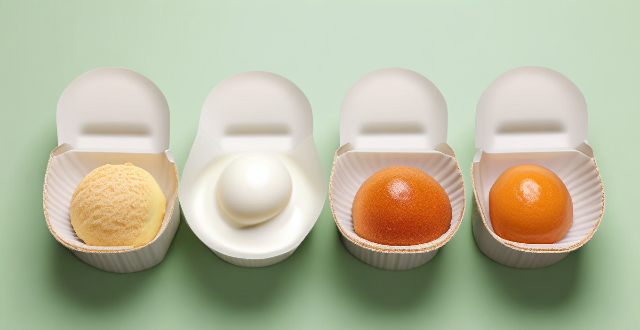
What are some healthy and quick breakfast options that can be prepared ahead of time ?
Overnight oats, smoothie bags, muffin tin egg cups, granola bars, yogurt parfaits, and baked sweet potatoes are healthy breakfast options that can be prepared ahead of time. These meal-prepped breakfasts offer benefits such as convenience, versatility, nutrient density, and customizability based on personal preferences. Tips for successful meal prep include planning ahead, batch cooking, proper storage, and staying organized. Incorporating these options into your routine ensures a healthy and satisfying start to the day while saving time in the mornings.

How can I maintain a clean and healthy living environment at home ?
Maintaining a clean and healthy living environment is crucial for family well-being. Tips include regular cleaning, proper ventilation, minimizing clutter, pest control, healthy eating habits, personal hygiene, waste management, and water conservation. These practices promote physical health, mental well-being, and overall happiness for the family.

Is drinking smoothies a part of a healthy diet ?
Drinking smoothies can be a part of a healthy diet, but it depends on the ingredients used and how often you consume them. Smoothies can be nutrient-dense, convenient, and customizable, but they can also be high in calories and sugar if not made properly. To make a healthy smoothie, use whole foods, limit added sugars, add protein, balance flavors, and practice portion control.

What role does hydration play in maintaining healthy skin ?
Hydration plays a crucial role in maintaining healthy skin by moisturizing the skin, regulating body temperature, delivering nutrients to the skin, aiding digestion and detoxification, and boosting immunity. Drinking plenty of water and using moisturizers containing ingredients like hyaluronic acid, glycerin, or ceramides can help keep the skin hydrated and healthy. Proper hydration also supports numerous bodily functions that contribute to overall skin health.

How can I incorporate more whole foods into my home cooking ?
The provided text offers a comprehensive guide on how to incorporate more whole foods into one's home cooking routine. Here is a summary of the key points: 1. **Plan Your Meals Around Whole Foods:** Engage in weekly menu planning, focusing on meals that include whole food ingredients, and make a shopping list based on this plan to avoid processed items. 2. **Start with Whole Grains:** Swap refined grains like white rice and pasta with whole grain versions such as brown rice and whole wheat pasta. Experiment with different whole grains like quinoa and barley for added variety. 3. **Include More Fruits and Vegetables:** Aim for a diverse range of fruits and vegetables to get a wide spectrum of nutrients. Prep them at the start of the week for easy access. 4. **Choose Lean Proteins:** Opt for skinless poultry and fish over red meats. Incorporate plant-based proteins like legumes, nuts, and seeds. 5. **Use Healthy Fats:** Cook with olive oil or avocado oil instead of butter or margarine. Add nuts and seeds to dishes for a healthy fat boost. 6. **Limit Processed Foods:** Be mindful of food labels and avoid products with numerous unrecognizable ingredients. Make your own snacks using whole food ingredients. 7. **Get Creative with Spices and Herbs:** Use these natural flavor enhancers instead of salt or high-sodium seasonings. Consider growing your own herbs for fresh flavors year-round. 8. **Cook from Scratch When You Can:** Make homemade stocks, sauces, and dressings instead of buying pre-made versions. Batch cook whole food meals and freeze leftovers for quick meals later. 9. **Embrace Fermented Foods:** Include probiotic-rich foods like kimchi and sauerkraut for gut health benefits. 10. **Keep Learning and Adapting:** Continuously educate yourself about whole foods and their nutritional benefits. Stay open to trying new whole foods to keep meals exciting and varied. By following these steps, individuals can successfully integrate more whole foods into their home cooking, leading to a healthier lifestyle for themselves and their families.

What are the benefits of taking a cooking class while on vacation ?
Taking a cooking class while on vacation offers numerous benefits, including improved culinary skills, cultural immersion, social experiences, personal growth, and health benefits. Learn new techniques and local cuisine, understand traditions, practice language skills, meet new people, build confidence, enhance creativity, incorporate healthy habits, and relieve stress.

What are some simple swaps I can make to create healthier versions of my favorite dishes ?
This article provides a comprehensive guide to making healthier food choices by suggesting simple swaps for various ingredients in common dishes. It starts with understanding the basics of healthy cooking, emphasizing the importance of reducing sugar and salt intake, using whole grains, increasing vegetable and fruit consumption, choosing healthy fats, and limiting processed foods. The article then lists specific swaps such as using Greek yogurt or coconut cream instead of heavy cream, opting for brown rice or whole wheat pasta over white versions, choosing lean cuts of meat or plant-based proteins, using natural sweeteners sparingly, preferring olive oil or avocado oil for cooking, and making homemade sauces to control salt and sugar intake. Finally, it encourages readers to make these changes gradually, focusing on balance and moderation to lead a healthier lifestyle.
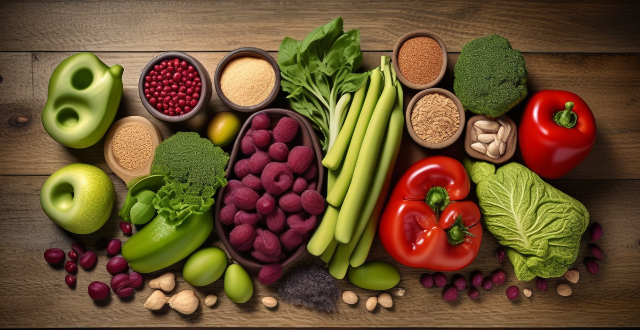
Can eating a healthy diet help with weight loss ?
Eating a healthy diet is crucial for weight loss and overall health. A balanced meal plan can increase satiety, improve nutrient intake, reduce cravings, and enhance digestion. To create a healthy meal plan, focus on whole foods, control portion sizes, choose healthy fats, stay hydrated, and plan ahead. By following these tips, you can achieve your weight loss goals while nourishing your body with essential nutrients.

What are some healthy dinner recipes for weight loss ?
The text provides a list of eight healthy dinner recipes that can aid in weight loss. These recipes include grilled chicken with steamed vegetables, quinoa salad with roasted veggies, salmon with asparagus, lentil soup, turkey chili, stuffed bell peppers, cauliflower rice stir fry, and zucchini noodles with pesto sauce. The text emphasizes the importance of eating a balanced meal before bedtime to maintain a healthy weight and ensure the body gets necessary nutrients for optimal functioning.

What are the best practices for sports nutrition in managing a healthy lifestyle ?
Sports nutrition is key to managing a healthy lifestyle. Best practices include staying hydrated, eating a balanced diet with carbohydrates and protein, choosing healthy fats, timing meals around workouts, using supplements cautiously, and prioritizing recovery through rest and proper post-workout nutrition. Consulting with a registered dietitian or healthcare professional can provide personalized advice.

Are there any healthy French dessert options ?
The article discusses the various healthy options for French desserts. It mentions fruit-based desserts like Tarte Tatin and Clafoutis, which use fresh fruits as the main ingredient, providing natural sweetness and fiber. It also suggests using whole wheat flour or almond flour to make these desserts healthier. The article further introduces nut-based desserts such as flourless chocolate cake and walnut and almond cake, which are low in carbohydrates and high in healthy fats and protein. Finally, it concludes that there are many healthy French dessert options available that allow you to indulge in something sweet without compromising your health goals.
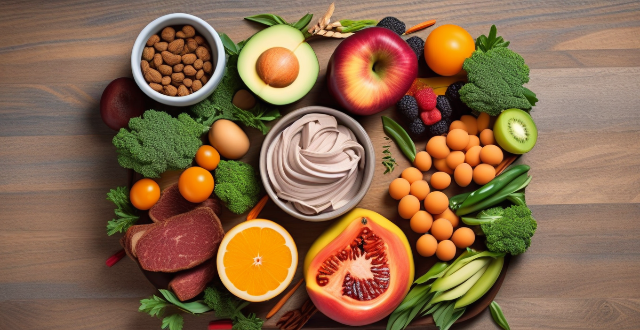
How can I make a healthy breakfast on a budget ?
How to make a healthy breakfast on a budget: plan ahead, buy in bulk, cook at home, use seasonal produce, don't skip protein, get creative with leftovers, and keep it simple.
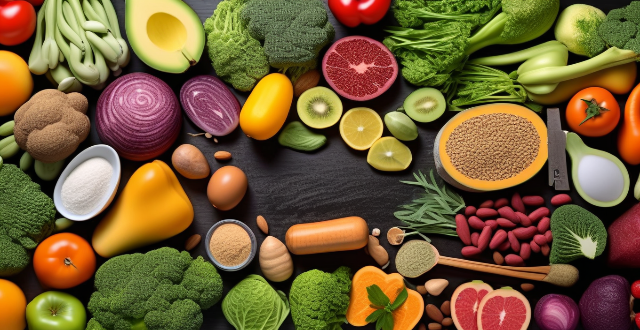
What are the key components of a healthy breakfast ?
A healthy breakfast should include a variety of nutrients to provide energy and support overall health. The key components are whole grains, protein, fruits and vegetables, healthy fats, and dairy or non-dairy alternatives. Whole grains provide complex carbohydrates, fiber, vitamins, and minerals. Protein is important for building and repairing tissues in the body. Fruits and vegetables provide essential vitamins, minerals, antioxidants, and fiber. Healthy fats are important for brain function and hormone regulation. Dairy products or non-dairy alternatives provide calcium, vitamin D, and other important nutrients. Simple combinations like oatmeal with nuts and fruit, a veggie omelette with whole wheat toast, or Greek yogurt with berries and granola can provide all the key components of a balanced breakfast.

How can women maintain a healthy weight through proper nutrition ?
Maintaining a healthy weight is crucial for overall well-being, and proper nutrition plays a vital role in achieving and maintaining it. Women can maintain a healthy weight through proper nutrition by following these tips: 1. Eat a balanced diet consisting of whole grains, fruits, vegetables, lean proteins, and healthy fats. 2. Control portion sizes to prevent overeating. 3. Eat regularly throughout the day to maintain consistent blood sugar levels and prevent overeating. 4. Drink plenty of water to stay hydrated and prevent overeating due to hunger pangs caused by dehydration. 5. Practice mindful eating by being present while you eat and paying attention to your hunger cues rather than relying on external factors like TV or social media to determine when you're full.